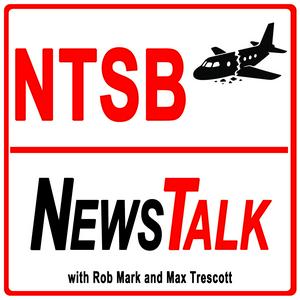In Episode 10 of NTSB News Talk, aviation safety experts Max Trescott and Rob Mark examine recent accident reports that reinforce why loss of control in flight continues to be the number one cause of fatalities in general aviation. Drawing from official NTSB accident reports and preliminary findings, they analyze crashes involving a TBM turboprop in Montana, a Beechcraft King Air in Arizona, and other cases where night flying illusions and equipment failures played a decisive role.TBM Crash in Kalispell, MontanaRob begins with an August accident in Kalispell, Montana, where a TBM turboprop attempted to land at the city airport. Witnesses said the aircraft touched down near the approach end of the runway before veering into parked planes, sparking a fire. Incredibly, all four occupants survived with only minor injuries. Though details are still sparse, the incident highlights how quickly loss of control can occur even in a high-performance single-engine turboprop.Max and Rob stress that while the TBM is an advanced and capable aircraft, any landing can go wrong if the pilot mismanages energy or fails to stabilize the approach. This accident serves as a reminder that precision, discipline, and preparation remain critical during the landing phase, when the margin for error is smallest.King Air 300 Crash in Chinle, ArizonaThe hosts then turn to a tragic August 5th accident involving a Beechcraft King Air 300 on the Navajo Nation in eastern Arizona. The aircraft was inbound on a medical transport flight, but before picking up its patient it crashed near the single runway at Chinle Municipal Airport. All four aboard—two pilots and two healthcare providers—were killed.Conditions that day created a perfect storm: a density altitude of over 8,400 feet combined with gusty crosswinds approaching 28 knots, nearly 90 degrees to the runway. The demonstrated crosswind limit for the King Air 300 is 20 knots, but as Rob explains, that number is not a hard limitation—it simply reflects the strongest crosswind tested during certification. What really matters is pilot proficiency.The Chinle crash underscores the dangers of trying to land in challenging conditions when performance margins are already compromised by high elevation and high temperature. For many pilots, especially those not flying crosswind landings regularly, the combination can quickly exceed skill level and lead to loss of control.Cessna Conquest II Crash in OhioRob next covers a preliminary report on a Cessna Conquest II that departed Youngstown, Ohio, en route to Bozeman, Montana. Security video showed the aircraft lifting off after a normal ground roll, but instead of climbing, it leveled off at just 100 feet and maintained that altitude until impacting trees. Both engines were reportedly running, making the lack of climb especially puzzling.Witnesses described unusual engine sounds, but Max and Rob note that eyewitness accounts are often unreliable. The bigger mystery is why the pilot failed to climb, despite having ample power available. Possible scenarios include distraction, incapacitation, or improper handling of the aircraft. As Max points out, 80 percent of accidents are linked to human error, and this crash may ultimately fall into that category.Night Illusions and the Needles, California AccidentMax then shares insights into a


